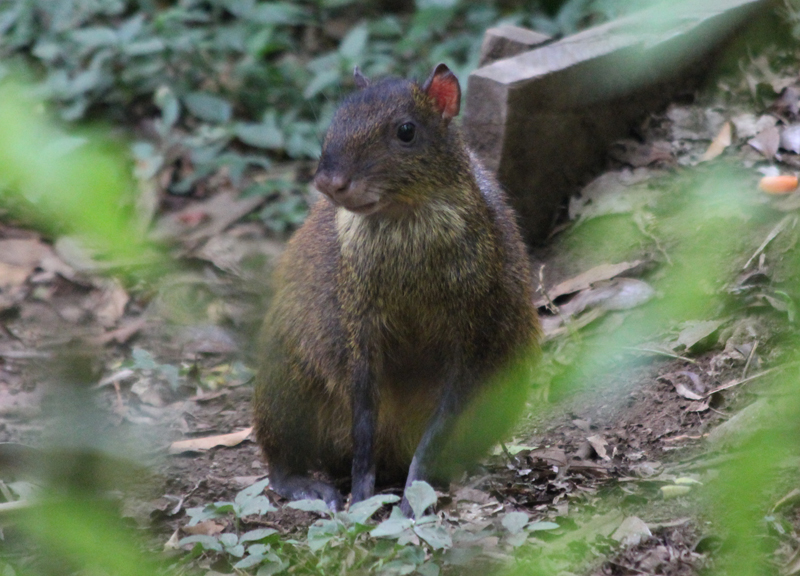Science News
Mysterious Seed Dispersal
July 17, 2012

Often scientists are like detectives, setting out to solve nature’s biggest mysteries.
Take a group of researchers studying a type of tree in Panama. Over ten thousand years ago, the tree’s seeds were dispersed by megafauna similar to wooly mammoths. Large. Elephant-like. Extinct. But the tree persists. How are the seeds dispersed now?
The researchers attached radio transmitters to the seeds—over 400 seeds, in fact—and watched how the seeds traveled. The seeds moved quickly, then moved again and again and again. One seed moved 36 times over 200 days!
The researchers suspected the seed-moving culprits were agoutis, rainforest rodents that hoard seeds like squirrel, but they needed proof. So they used more surveillance equipment—this time tagging some of the agoutis and setting up video cameras in the area.
And sure enough, the agoutis were taking the seeds and burying them, over and over again, stealing them from other agoutis’ stashes!
“We knew that these rodents would bury the seeds but we had no idea that there would be this constant digging up of the seed, moving it and burying it, over and over again,” says researcher Roland Kays. “As rodents steal the same seed many, many times, it adds up to a long-distance movement of the seed that one animal by itself could have never done.”
While the agoutis eventually eat most of the seeds, 14% of the seeds survived until the following year. And all that pilfering moved some seeds far enough from the mother tree to create favorable conditions for germination.
One mystery solved, but the work continues. Kay says that applying such sophisticated animal tracking techniques to the plant world has the potential to improve understanding of forest ecology and regeneration.
“When you think about global climate change and habitats shifting, for a forest to move into new areas, trees need to have their seeds moved into new areas. This opens up a route to study how animals can help trees adjust to climate change through seed dispersal.”
The research is published this week in Proceedings of the National Academy of Sciences.
Image: Benjamin Keen/Wikipedia